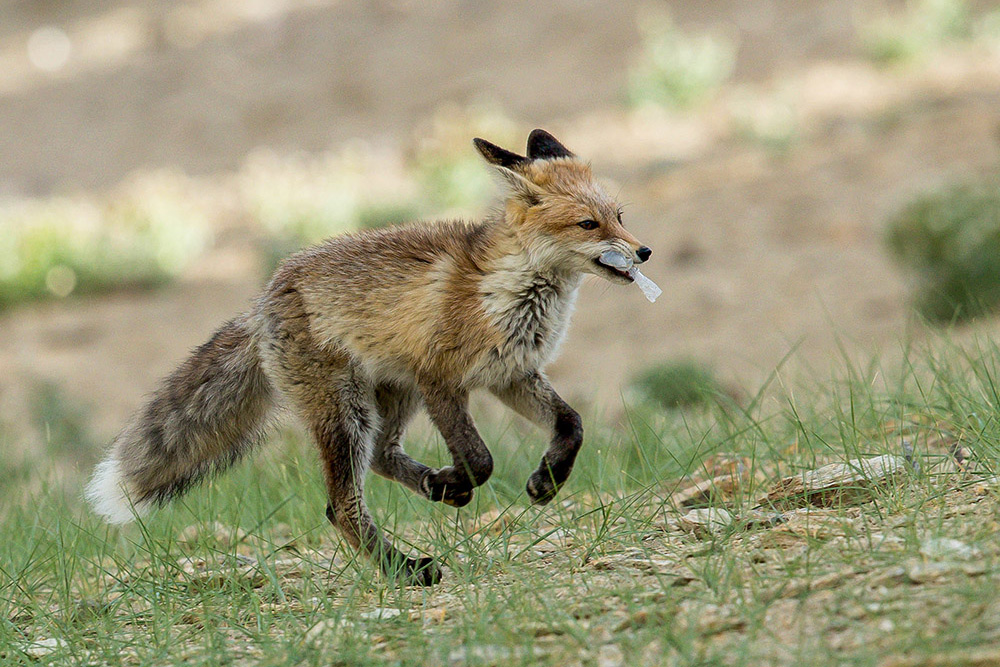 "
"
Hanle is a small, remote village in Ladakh, Jammu & Kashmir, India, closer to Tibet, with a population of around 1000 people. It is surrounded by mountains, and marshland at the centre. This village is internationally known for hosting the world’s highest observatory.
Its unique landscape supports a vast range of wildlife and a breeding ground of various birds and mammals. The rocky mountains are home to Eurasian Eagle Owl, Upland Buzzard and the likes. Also there are mammals like the Red Fox, Tibetan Woolly Hare and Pika.
The marsh land is the breeding ground of another critically endangered species of bird, namely the Black-necked Crane. Many bird species like the Tibetan Lark, Tibetan Snowfinch, Desert Wheatear, Hume’s Groundpecker and Hume’s Short-toed Lark breed here.
Recently when I visited Hanle for birding, I got to see a cute Red Fox pup. I spent more than an hour watching him playing with some fur of yak or sheep. After sometime, he left that toy and got hold of a small plastic bottle. As he was teething, he started biting the bottle, which was an ugly, disturbing scene.
Plastic is omnipresent, a great threat to the environment and wildlife too. It becomes our prime responsibility to reduce the use of single-use disposables, which are a great threat even in the remotest corners of the world.

 CI is a non-profit, non-commercial portal that aims to facilitate wildlife and nature conservation by providing reliable information and the tools needed to campaign effectively.
CI is a non-profit, non-commercial portal that aims to facilitate wildlife and nature conservation by providing reliable information and the tools needed to campaign effectively.



Chosen as 'Picture of the Week'
Unregulated tourism to these remote areas poses a brand new threat to high altitude wildlife in addition to conventional threats like hunting, domestic predators, habitat disturbance, and overgrazing by domestic livestock.